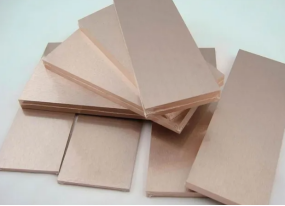- Home
- Products
- Elementary
- Boride Powder
- 3D Printing Powder
- Sulfide Powder
- Oxide Powder
- Carbide powder
- Nitride Powder
- Silicide Powder
- Hydride Powder
- Telluride Powder
- Selenide Powder
- Stearic Acid Series
- Phosphide Powder
- Nanoparticles
- Metal Alloy
- MAX Phase
- Lithium Battery Anode
- Surfactant
- Molecular sieves
- Concrete Admixtures
- News
- Answers
- Contact
- About
News
- 1
- 1
Application scenarios of tungsten copper alloy
If you are looking for high-quality products, please feel free to contact us and send an inquiry, email: brad@ihpa.net
Welding electrode tungsten copper alloy has heat resistance, arc ablation resistance, high certain gravity and high electrical and thermal conductivity. It is very easy to make and suitable for welding electrodes, with great high-temperature stamina and certain plasticity. At extremely high temperatures, such as over 3000 ° C, the copper in the alloy is melted and vaporized, taking in a large amount of warmth and decreasing the surface temperature of the product. As a result, this type of product is also called steel sweating. Given that tungsten and copper are immiscible, tungsten-copper alloy has the reduced expansion, use resistance, and rust resistance of tungsten and the high electric and thermal conductivity of copper, and is suitable for various mechanical handling.
1. Item Classifications:
Tungsten copper electrode
Welding electrode tungsten copper alloy has heat resistance, arc ablation resistance, high particular gravity and high electric and thermal conductivity and is very easy to make and is suitable for use in welding electrodes.
Tungsten copper alloy pole
Tungsten copper is a composite product improved by utilizing the superb metal residential or commercial properties of high purity tungsten powder and the plasticity and high conductivity of high purity copper powder with static pressure molding, high-temperature sintering, and copper dissolution. It has good arc-breaking performance, excellent electric and thermal conductivity, little thermal growth, no softening at heat, high strength, high density, and high hardness.
Tungsten copper electronic packaging sheet
Tungsten copper digital packaging material: It has both the reduced development qualities of tungsten and copper's high thermal conductivity attributes. Its thermal development coefficient and electric conductivity can be changed by adjusting the structure of the material, hence providing ease for making use of the material.
Tungsten copper tube
Tungsten copper alloy tubes are extensively made use of in concrete carbide and refractory metals. Due to the fact that tungsten copper alloy is easy to machine, using tungsten copper tube plays a great role when the surface requires to be simple to the device and the inner size needs to be small.
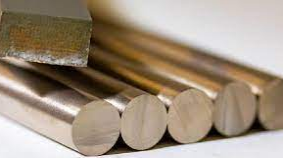
Tungsten copper alloy cable
Safety measures for use:
1. Colloidal graphite can not be put on the surface of tungsten copper cable. When the temperature is above 1000, stay clear of positioning the tungsten copper cord along with iron, nickel, and carbon. Tungsten copper cables need to be positioned in a dry location. The family member humidity must not exceed 65% of room temperature, and stay clear of being placed together with acidic or alkaline things.
2. After cleaning up the tungsten copper wire, place it in a completely dry container to prevent direct contact with air to stop oxidation.
Performance use
Tungsten-copper composite product is a two-phase architectural pseudo-alloy mostly made of tungsten and copper. It is a metal matrix composite product. Because of the large physical residential properties of copper steel and tungsten, it can not be created by melting and casting. Generally, powder alloy is made use of modern technology for production.
Tungsten copper alloy has a broad range of uses, most used in aerospace, aviation, electronic devices, electrical power, metallurgy, equipment, sporting activities devices and various other markets. Second, it is also utilized to make the get in touches with high-voltage electrical switches immune to arc ablation and high-temperature components such as rocket nozzle throat linings and tail rudders. It is additionally made use of as electrodes for electric machining, high-temperature molds, and other items that require electric and thermal conductivity and high-temperature usage.
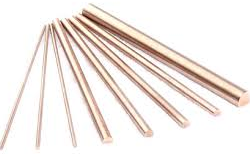
2. Process introduction
The process circulation of creating tungsten-copper alloy using powder metallurgy technique is powdering-mixing of ingredients-pressing and molding-sintering and infiltration-cold working.
After the tungsten-copper or molybdenum-copper mixed powder is pressed and created, it is liquid-phase sintered at 1300-1500 °. The materials prepared by this approach have poor harmony and numerous closed gaps, and the density is generally lower than 98%. However, ultrafine and nanopowders can be prepared by adding a percentage of nickel through activation sintering, mechanical alloying, or oxide supply decrease. It can enhance the sintering task, thereby raising the thickness of tungsten-copper and molybdenum-copper alloys. However, nickel activation sintering will substantially lower the electric and thermal conductivity of the product, and the intro of pollutants by mechanical alloying will also minimize the conductivity of the product. The oxide co-reduction technique prepares the powder. The process is cumbersome, the manufacturing effectiveness is reduced, and it is challenging to mass produce.
Shot molding
High-density tungsten alloys are produced by shot molding. The production approach is to mix nickel powder, copper tungsten or iron powder with a consistent fragment dimension of 1-5 microns, tungsten powder with a fragment dimension of 0.5-2 microns and tungsten powder of 5-15 microns. After that mix in 25% -30 % natural binder (such as paraffin or polymethacrylate) is injection molded, the binder is removed by vapor cleansing and irradiation, and after that sintered in hydrogen to acquire a high-density tungsten alloy.
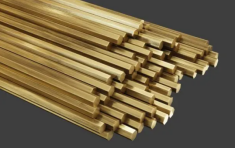
Copper oxide powder technique
As opposed to using metallic copper powder, copper oxide powder (combined and ground to reduce it to copper) creates a continuous matrix in the sintered compact, with tungsten functioning as a strengthening structure. The surrounding 2nd element bound the high-expansion component, and the powder is sintered in moist hydrogen at a reduced temperature level. It is reported that making use of very great powder can boost the sintering performance and densification, making it reach more than 99%.
Tungsten and molybdenum skeletal system infiltration technique
Initially, tungsten powder or molybdenum powder is pressed and sintered right into a tungsten and molybdenum skeletal system with a particular porosity, and afterward, copper is penetrated. This method is appropriate for tungsten copper and molybdenum copper items with reduced copper web content. Compared to tungsten copper, molybdenum copper has the advantages of little mass, easy handling, straight growth coefficient, thermal conductivity coefficient and some main mechanical residential or commercial properties equal to tungsten copper.
Although the heat resistance is not like tungsten copper, it is far better than some heat-resistant materials, so it has excellent application leads. Due to the fact that the wettability of molybdenum-copper is worse than that of tungsten-copper, particularly when preparing molybdenum-copper with low copper content, the density of the material after seepage is low, resulting in the material's air rigidity, electrical conductivity, and thermal conductivity not fulfilling the demands. Its application is limited.
Physical indicators
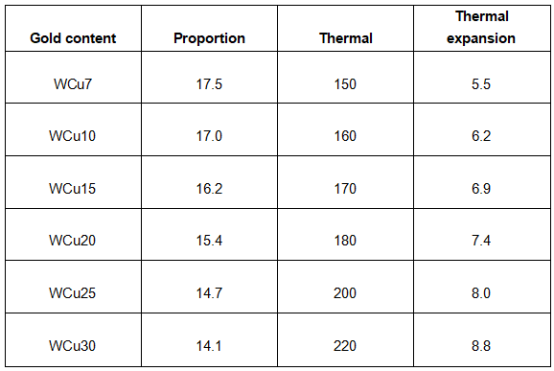
3. Material properties
Tungsten-copper alloy integrates the benefits of copper and tungsten with high strength, high specific gravity, high temperature resistance, arc ablation resistance, great electric conductivity and electric home heating homes, and excellent processing efficiency. It uses premium tungsten powder and oxygen-free copper powder and isostatic pressing (heat sintering-copper infiltration) to ensure product purity, accurate ratio, great framework, and excellent efficiency. Excellent arc damaging performance, good electrical conductivity, excellent thermal conductivity, small thermal development
4. Surface area Quality
The surface area of tungsten-copper alloy rods has been turned and have to not have flaws such as holes, splits, delaminations or additions. The defects and allowable inconsistencies of tungsten-copper alloy poles comply with the following table:
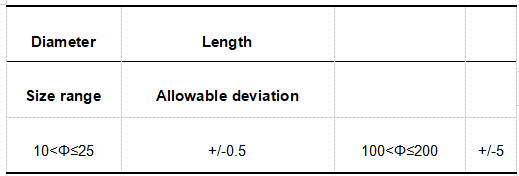
5. Primary application
Tungsten-copper alloy combines the advantages of steel tungsten and copper. Among them, tungsten has a high melting point ( 3410 ° C) and (the melting point of copper is 1080 ° C )and high density (the thickness of tungsten is 19.34 g/cm3 and the thickness of copper is 8.89 g/cm3); Copper has superb electrical and thermal conductivity. Tungsten-copper alloy (normally made up in the variety of WCu7 ~ WCu50) has a consistent microstructure, heat resistance, high stamina, arc ablation resistance, and high thickness; it has modest electrical and thermal conductivity and is commonly made use of in armed forces high-temperature resistant materials., electric alloys for high-voltage switches, electric machining electrodes, and microelectronic products, as parts and elements, are widely utilized in aerospace, air travel, electronic devices, electric power, metallurgy, machinery, sports devices and other sectors.
Armed forces heat resistant materials
Tungsten-copper alloys are made use in aerospace as nozzles, gas tails, air tails, and nose cones for projectiles and rocket engines. The main needs are high temperature resistance (3000K ~ 5000K) and high-temperature airflow resistance. Copper is primarily used under heat. The refrigeration impact of sweating brought on by volatilization (copper melting point is 1083 ° C) decreases the surface area temperature level of tungsten copper, guaranteeing its use under severe conditions of heat.
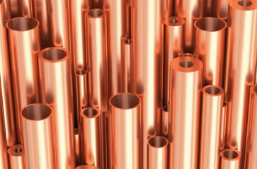
Electrical alloys for high-voltage switches
Tungsten copper alloy is widely utilized in high-voltage switches, 128kV SF6 circuit breakers WCu/CuCr, and high-voltage vacuum cleaner load switches (12kV 40.5 KV 1000A) and arresters. High-voltage vacuum cleaner switches are small in size, simple to preserve, have a large range of use, and can be used in wet, flammable, eruptive and harsh settings. The major performance demands are resistance to arc ablation, resistance to combination welding, little cut-off present, reduced gas content, and low thermal electron emission capacity. Along with standard macroscopic efficiency needs, porosity and microstructural properties are also required, so special processes should be adopted, consisting of complex processes such as vacuum degassing and vacuum seepage.
Electric machining electrodes
In the early days of EDM electrodes, copper or graphite electrodes were utilized, which were cheap but not resistant to ablation. Tungsten copper electrodes have primarily replaced them. The benefits of tungsten copper electrodes are:
· Heat resistance.
· High temperature strength.
· Arc ablation resistance.
· Great electric and thermal conductivity.
· Quickly warmth dissipation.
Applications focus on trigger, resistance welding, and high-voltage discharge tube electrodes.
The qualities of electrical machining electrodes are a wide variety of requirements, little sets and large complete quantities. Tungsten copper materials utilized as electric machining electrodes ought to have the highest possible density and structural harmony, especially slender rod-shaped, tubular and special-shaped electrodes.
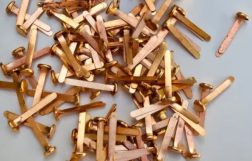
Microelectronic products
Tungsten copper electronic packaging and warm sink products have both the low expansion qualities of tungsten and copper's high thermal conductivity attributes. Its thermal growth coefficient and thermal conductivity can be altered by readjusting the make-up of tungsten copper, offering it even more advantages—the vast array of applications. Due to the fact that tungsten copper material has high warm resistance and good thermal and electrical conductivity and has a thermal expansion coefficient that matches silicon wafers, gallium arsenide and ceramic materials, it is extensively used in semiconductor materials. Suitable for high-power tool product packaging products, warm sink materials, heat dissipation parts, porcelains and gallium arsenide bases, etc.
In general, tungsten copper alloy is a material with excellent properties and widely used in many fields. With the continuous development of science and technology, tungsten copper alloy will have wider application prospects in the future. If you are interested in tungsten copper alloy, you can learn more about its properties and application fields or pay attention to the latest research progress in related fields.
6. Supplier
TRUNNANO is a supplier of tungsten copper alloy with over 12 years experience in nano-building energy conservation and nanotechnology development. It accepts payment via Credit Card, T/T, West Union and Paypal. Trunnano will ship the goods to customers overseas through FedEx, DHL, by air, or by sea. If you are looking for high-quality tungsten copper alloy please feel free to contact us and send an inquiry.
Inquiry us
PREVIOUS NEWS
building materials industry indispensable good material
NEXT NEWS
